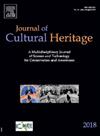Methods for real-time underground built heritage visualization enhancement
IF 3.3
2区 综合性期刊
0 ARCHAEOLOGY
引用次数: 0
Abstract
This scientific paper aims to address the challenges that come with enhancing the real-time visualization of underground heritage sites. The study seeks to overcome the limitations of low-light conditions and human color perception in underground environments by proposing a solution that combines image processing techniques and augmented reality (AR) concepts. The system utilizes a virtual reality (VR) headset integrated with a stereovision camera to capture live images. To improve image quality, the study evaluates various image processing algorithms, such as MultiScale Retinex and Contrast Limited Adaptive Histogram Equalization. The results show that the proposed methods are effective in enhancing the sightseeing experience of underground heritage sites. The image processing algorithms successfully brighten dark areas, increase clarity, and reveal subtle color differences. The paper discusses the system architecture and requirements, along with prototype testing in underground heritage sites. Overall, the developed system significantly improves the visualization of underground heritage sites in real-time, providing visitors with a more immersive and enhanced visual experience. The research offers valuable insights for future applications and research in this domain, contributing to the field of underground heritage visualization.

地下建筑遗产实时可视化增强方法
这篇科学论文旨在解决增强地下遗址实时可视化所带来的挑战。该研究提出了结合图像处理技术和增强现实(AR)概念的解决方案,旨在克服地下环境中弱光条件和人类色彩感知的局限性。该系统利用虚拟现实(VR)耳机与立体视觉相机集成来捕捉实时图像。为了提高图像质量,本研究评估了各种图像处理算法,如MultiScale Retinex和对比度有限的自适应直方图均衡化。结果表明,所提出的方法对提高地下遗址的观光体验是有效的。图像处理算法成功地照亮了黑暗区域,增加了清晰度,并揭示了微妙的色彩差异。本文讨论了系统的架构和需求,并在地下遗址进行了原型测试。总体而言,开发的系统显著提高了地下遗址的实时可视化,为游客提供了更加身临其境和增强的视觉体验。该研究为该领域未来的应用和研究提供了有价值的见解,为地下遗产可视化领域的发展做出了贡献。
本文章由计算机程序翻译,如有差异,请以英文原文为准。
求助全文
约1分钟内获得全文
求助全文
来源期刊

Journal of Cultural Heritage
综合性期刊-材料科学:综合
CiteScore
6.80
自引率
9.70%
发文量
166
审稿时长
52 days
期刊介绍:
The Journal of Cultural Heritage publishes original papers which comprise previously unpublished data and present innovative methods concerning all aspects of science and technology of cultural heritage as well as interpretation and theoretical issues related to preservation.
 求助内容:
求助内容: 应助结果提醒方式:
应助结果提醒方式:


